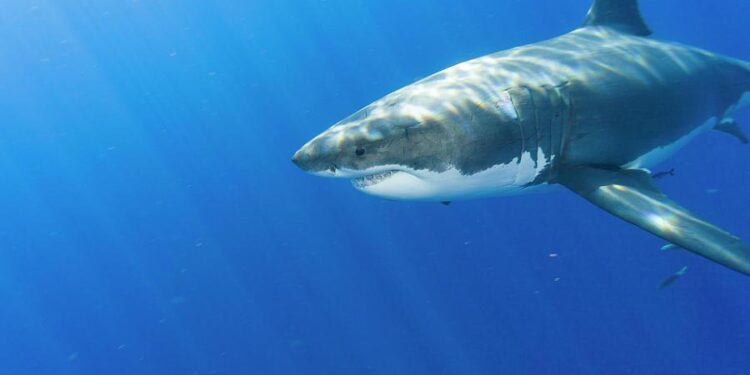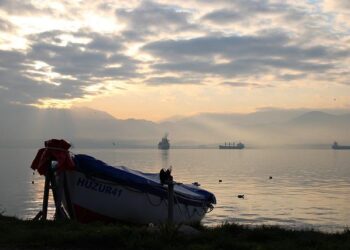Recent reports of 5-meter-long sharks allegedly threatening TĂĽrkiye’s coastline have sparked public concern and widespread media attention. However, marine experts and local authorities have stepped forward to dismiss these alarming claims, emphasizing that there is no credible evidence supporting the presence of such large, aggressive sharks in Turkish waters. This article examines the facts behind the circulating rumors and the reassurances provided by specialists in marine biology and coastal safety.
Experts Refute Evidence of Giant Sharks Near TĂĽrkiye’s Shoreline
Marine biologists and local authorities have jointly dismissed recent reports claiming the presence of five-meter-long sharks along TĂĽrkiye’s coastline. Experts argue that such sensationalized accounts lack credible evidence and are likely fueled by misidentifications of more common, smaller shark species or other marine life. According to Dr. Elif Kaya, a marine ecologist at Istanbul University, “the ecological conditions near TĂĽrkiye’s shores do not support the frequent appearance of such large predatory sharks.” She emphasized that no verified sightings or physical evidence, such as bite marks or carcasses, have been documented in recent months.
Authorities have also highlighted the dangers of spreading misinformation through social media, which can cause unnecessary panic among coastal communities and tourists. Key points raised by experts include:
- Regular shark monitoring programs show stable populations of smaller, non-threatening shark species.
- No unusual increase in shark-related incidents or strandings has been recorded.
- Environmental assessments indicate the habitat is less suitable for large predatory sharks due to water temperature and prey availability.
| Species | Average Length | Sighting Frequency |
|---|---|---|
| Small-spotted Catshark | 70 cm | High |
| Blue Shark | 2.5 m | Moderate |
| Great White Shark | Up to 6 m | None |
Marine Biologists Explain Shark Behavior and Dispel Public Fears
Marine biologists emphasize that shark sightings reported off TĂĽrkiye’s coast are not indicative of aggressive behavior or an emerging threat. According to recent studies, the northern Mediterranean waters are naturally home to various shark species, but the majority of these pose no danger to humans. Experts point out that sharks, especially larger specimens reaching up to 5 meters, are typically more interested in marine life than human interaction. Misinterpretations of their presence have fueled unnecessary fears, often amplified by social media and sensational headlines.
Key facts clarified by researchers include:
- Shark migration patterns: Seasonal movements bring certain species closer to the shore, but these are routine and not aggressive incursions.
- Feeding habits: Most large sharks feed on fish and marine mammals, showing little interest in humans.
- Population control: Sharks play a critical role in maintaining healthy marine ecosystems.
- Incidences of attacks: Statistically rare in the area, with no credible reports of recent aggressive encounters along TĂĽrkiye’s coastline.
| Shark Species | Max Length (m) | Behavior | Risk Level |
|---|---|---|---|
| Blue Shark | 3.8 | Nomadic, feeds on fish | Low |
| Great White Shark | 6.0 | Opportunistic predator | Moderate |
| Spinner Shark | 3.1 | Coastal feeder | Low |
| Shortfin Mako | 4.0 | Fast swimmer, piscivore | Low |
Authorities Advise Public on Coastal Safety and Promoting Marine Awareness
Coastal authorities have stepped forward to address growing public concerns following recent rumors about the presence of 5-meter sharks along TĂĽrkiye’s shoreline. Marine biologists and local officials categorically dismissed these claims, emphasizing that no evidence supports the notion of such large shark sightings in the region. Instead, experts highlighted common marine species often mistaken for large predators and urged coastal visitors to remain calm and informed.
To enhance public safety and promote marine conservation, authorities have issued a set of key recommendations aimed at beachgoers and fishermen alike. These include:
- Staying within designated swimming zones monitored for marine activity.
- Reporting unusual sightings to local marine wildlife authorities promptly.
- Participating in community-driven marine awareness programs organized regularly along the coast.
- Respecting the natural marine habitat by avoiding littering and disruption of wildlife.
| Safety Tip | Description |
|---|---|
| Avoid Swimming at Dusk | Sharks are most active during low light periods; stick to daylight hours. |
| Use Local Guidance | Always check with lifeguards or marine officials before entering the water. |
| Proper Waste Disposal | Reduce pollution to protect marine ecosystems and reduce risks to humans. |
| Report Sightings | Notify authorities immediately of any unusual shark activity. |
Wrapping Up
As investigations continue, marine experts maintain that the presence of 5-meter sharks near TĂĽrkiye’s coast remains unsubstantiated. Authorities urge the public to rely on verified information and report any unusual sightings through official channels. While vigilance is important, experts emphasize that current evidence does not indicate a significant threat to coastal communities or tourism in the region.
















